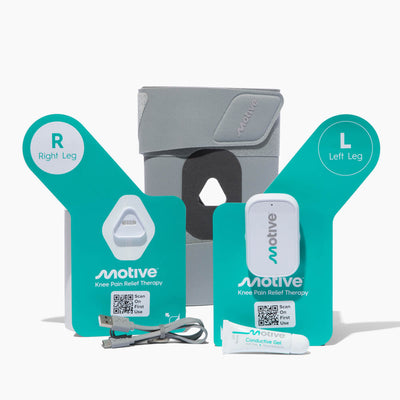
Knee pain when squatting is a common complaint, particularly among those who engage in physical activity that puts stress on the lower body. While squats are a fantastic exercise, they are also associated with roughly 30% of weightlifting injuries, especially knee injuries. This discomfort can stem from various causes, including overuse, patellofemoral pain syndrome, and meniscus tear, often leading to frustration for individuals seeking to maintain an active lifestyle without pain.
This guide is specifically designed for those experiencing discomfort from squatting, offering insights and at-home relief strategies to mitigate knee pain.
Why Squatting Hurts: Unpacking Knee Pain
The mechanics of squatting involve complex movements that place significant strain on the knee joint, engaging the quadriceps, hamstrings, and gluteal muscles. Common causes of knee pain during this activity include improper squat form, patellar tendon strain, and underlying conditions such as runner’s knee (iliotibial band syndrome), jumper’s knee, and knee osteoarthritis. Muscle imbalances and limited ankle mobility can also contribute to discomfort, emphasizing the importance of addressing these factors.
Furthermore, overuse from repetitive squatting without adequate rest and recovery can lead to inflammation and stress on the knee joint, exacerbating pain. Poorly conditioned leg muscles may fail to properly support the knee during the squatting motion, increasing the risk of injury to the knee's ligaments, including the anterior cruciate ligament (ACL) and the meniscus, which are critical for knee stability and shock absorption.
Squatting with excessive weight or incorrect weight distribution can place undue pressure on the knee joint, leading to patellofemoral pain syndrome, where the pain is felt around the kneecap. Additionally, a weak core and poor pelvic control can shift unnecessary stress to the knees, as the body compensates for instability.
Valgus collapse, where the knees cave inward during the squat, is another common issue that not only causes knee pain but also risks serious knee injury. Incorrect foot positioning can alter the load on the knee joint, with the feet too close together or too far apart affecting the alignment of the femur and tibia, thereby straining the knee. Neglecting a proper warm-up routine before engaging in squats can leave the muscles and joints unprepared for the exercise, increasing the likelihood of pain and injury.
Perfecting Your Squat: Form and Technique
Achieving pain-free squats starts with mastering proper form. This means maintaining the knees in line with the feet, not letting the knees extend past the toes, and ensuring the back remains straight to minimize stress on the lower back. The depth of the squat should be adjusted according to individual flexibility and strength, aiming to keep the shinbone and femur aligned while distributing body weight evenly.
To further enhance squat form, engaging the core throughout the movement is crucial for stabilizing the lower back and maintaining overall balance. Initiating the squat by pushing the hips back first, rather than bending the knees, can help maintain the knees' alignment over the feet, reducing the risk of knee pain. It's also important to activate the glutes and outer thigh muscles, which support the knee joint by preventing inward collapse.

Breathing techniques, such as inhaling on the descent and exhaling while pushing up, can increase core stability and support proper form. Incorporating ankle mobility exercises into your routine improves your ability to achieve greater depth in your squats without compromising form.
Strengthening for Squat Support
Strengthening the muscles around the knee joint is crucial for support and stability. Exercises targeting the quads, hamstrings, and glutes, such as lunges and strength training routines, can help alleviate pressure on the patella and enhance overall knee health. Incorporating low-impact activities into your workout routine also builds muscle without exacerbating knee pain, aiding in the prevention of sprains and injuries.
Cycling is an excellent low-impact exercise that strengthens the quads and hamstrings while minimizing stress on the knee joint, promoting circulation and flexibility. Swimming and water aerobics are also ideal, as the buoyancy of water supports body weight, allowing for resistance training with reduced impact. Walking, especially on flat surfaces, can be a beneficial way to build endurance and strength in the lower body without putting undue pressure on the knees.
Performing bodyweight exercises, like modified squats or wall sits, helps build muscle around the knees without the added strain from heavy weights, ensuring a safer strengthening regimen.
Experience the transformative power of Motive therapy, designed to fortify the muscles surrounding your knee and significantly reduce discomfort. Embrace Motive therapy in your routine for stronger, healthier knees.
Flexibility and Mobility: Enhancing Knee Health
Incorporating stretching exercises that focus on the thigh, hamstring, and gluteal muscles is key to reducing the risk of knee pain. Mobility exercises aimed at improving the range of motion in the knee and hip joints, as well as ankle mobility, can facilitate smoother squatting movements and decrease the likelihood of pain.
Dynamic stretches such as leg swings, both front-to-back and side-to-side, can warm up the hip joints and increase leg mobility, preparing the body for squatting and other exercises.
Incorporating these mobility exercises into your pre-workout routine not only aids in achieving a fuller range of motion but also significantly reduces the risk of injury and knee pain during and after squatting.
At-Home Remedies for Immediate Relief
For those experiencing acute knee pain, the R.I.C.E. method—Rest, Ice (using an ice pack), Compression, and Elevation—provides effective relief. Over-the-counter options like ibuprofen can offer pain relief, but it's essential to consult healthcare or orthopedic advice before starting any medication to understand potential side effects.
It's crucial to gradually reintroduce movement and exercises as the pain subsides to restore knee function and prevent stiffness, always under the guidance of a healthcare professional to ensure safety and effectiveness.
Work Towards Pain-Free Squats with Motive
By incorporating the strategies outlined, such as mastering the squat form, engaging in Motive therapy offers a personalized solution for conquering knee pain during squats.
Motive uses targeted muscle-strengthening technology to relieve knee pain. When coupled with stronger quad muscles and proper squat technique, this can improve balance and joint health. Learn how to integrate Motive seamlessly into your daily life and discover success stories showcasing the effectiveness of our technology.
Motive goes beyond rehab, acting as a preventative measure against future knee issues. We empower you to maintain an active lifestyle without knee pain. Shop Motive today and take the first step towards stronger, more resilient knees. Don't let knee pain limit your workouts—explore Motive therapy and experience the difference.





